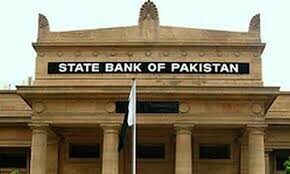OUR company’s foray into the Pakistan market has been a journey full of challenges and unseen opportunities. Today, we can speak from an experience of eight years in cross-border trade between India and Pakistan.
We started with import of soda ash and soon expanded to hydrogen peroxide, PCC, caustic soda flakes and caustic soda lye. Other than chemicals, we have been importing coal, cotton, textiles, yarn, molasses, worn clothing, furniture, limestone, cement, sugar, gypsum and more from Pakistan.
Our major items of export to Pakistan include chemicals, FMCG, laces, textiles, yarn, machinery and parts, cotton and more. Due to policy constraints, our imports are through the road route and exports are through the rail route.
In 2008, the only trade route available by land for goods other than perishable goods was by rail. Our business volume in this period started with an initial single rail wagon of 24MT and grew to approximately 8,000MT per month of chemical imports from Pakistan. Only the current power scenario in Pakistan has made a major dent in the volume; otherwise we were prepared for further growth in volumes.
The new chapter of Indo-Pak trade is poised to grow. At each turn, there is a new challenge, and it takes persistence and patience of the trading community of both sides to overcome
When we focused on import of liquid chemicals like hydrogen peroxide, we took on the challenge of getting the product through the road route. It took five months to get the first truck to roll in 2011. Today, almost 250 trucks cross the border into India through the same route, in large measure made possible by infrastructure expansion for processing cargo trucks on the Indian side. Processing containerised cargo is the next step in this chain of challenges.
The next opportunity was in importing liquids in bulk tankers to avail savings on the sizable packing and handling cost. The challenge was to get the operating rules framed at the port level, create infrastructure, acquire and develop the skill level required for tanker-to-tanker shifting of materials. We succeeded, and currently Pakistan is successfully importing CO2 gas from India via the road route under a similar arrangement.
This has had unforeseen advantages for Pakistani businesses. For example, the price of CO2 gas in Pakistan spiralled last year due to an unscheduled interruption in domestic production. CO2 is an important element of many industrial processes, and the price spiral could have done much damage if it was allowed to run its course.
Fortunately, the price was brought under control quickly by importing CO2 from India via the land route, since importing the gas from abroad would have been prohibitively expensive and taken a very long time.
The trade routes between India and Pakistan can be classified broadly into ‘formal’ and ‘informal’. Informal routes go through the UAE, Afghanistan, Singapore and some other countries, and have been and still are dominating the formal routes, negating the advantages offered by proximity.
Speaking of formal routes — which can be classified into sea, road and rail routes — all three have their own value for trade. Regionally speaking, Karachi-Mumbai via the sea and Lahore-Amritsar via land are operational, while parleys for the opening of Munabao-Khokhrapar and Hussaniwala-Ganda Singh Wala are on. And there has been an addition of a third-level-cum-trade route, the barter trade in the Kashmir Valley. For reasons of lack of transparency in the rules applicable on this route, I prefer to see it as an informal trade route.
Pakistan is expected to scrap the negative and Wagah lists in the near future, paving the way for freer trade between the two trading partners. The duty concessions of selected items under SAFTA are available and are being utilised by importers on both sides. The list of items under SAFTA is expected to be expanded and the rate of duty concessions to be increased. This will mean expansion in trade volumes as well the bouquet of items being traded.
Talking of industrial produce, textile, cement, surgical implements and sports goods are core strength areas of Pakistan, and all are produced in close proximity to the Indian market. Though these products have entered Indian markets, they have yet to achieve full potential. It will depend on the long-term vision, strategy and persistence of the captains of the industry to achieve the deserving share in the Indian market.
The Indian industrial product basket is bigger than that of Pakistan, but it still has to pass the test of market dynamics. Pakistan has high tariff rates and many Indian products can’t pass the viability test due to Pakistan’s numerous FTAs with other countries. There is stiff competition from Indian goods arriving in Pakistani markets through Afghanistan and through the Kashmir barter trade. Indian companies have yet to have a long-term strategy of investing in brand building in the Pakistani market.
The new chapter of Indo-Pak trade is poised to grow. At each turn, there is a new challenge, and it takes the persistence and patience of the trading community of both sides to overcome. But it’s important that we not allow the challenges to discourage us from the pursuing the opportunities that await all of us on the other side.
The writer is the director of Noble Translinks Pvt Ltd and managing partner of Sinochem Impex, based in Amritsar
Published in Dawn, Economic & Business, Sep 15th, 2014
















































Dear visitor, the comments section is undergoing an overhaul and will return soon.